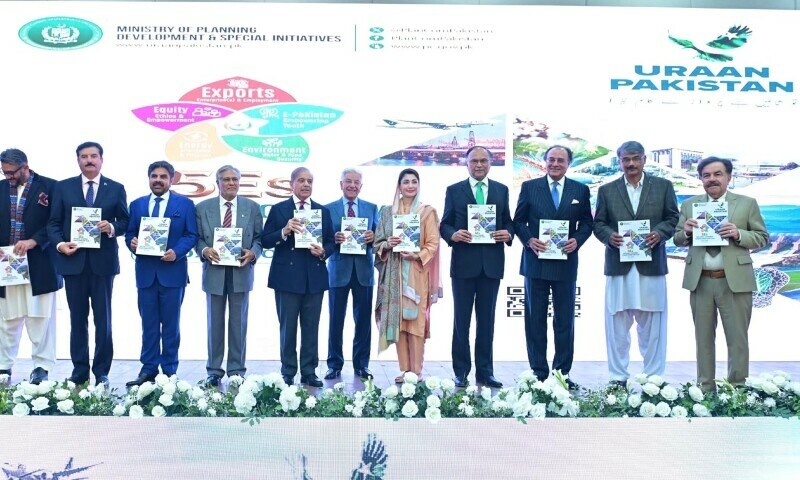
On the eve of the new year, the federal government announced its ambitious plans for Pakistan’s economic future. The government aims to achieve sustainable GDP growth of 6% by 2028, create one million jobs annually, attract an additional $10 billion in private investment each year, and reach an export target of $60 billion by FY2028. Prime Minister Shehbaz Sharif officially launched the National Economic Transformation Plan 2024-2029, named Uraan Pakistan: Homegrown National Economic Plan, on Tuesday. This five-year initiative is designed to tackle Pakistan’s key economic challenges through a framework known as the “Five Es”: Exports, E-Pakistan (digital growth), Equity and Empowerment, Environment, Food and Water Security, and Energy and Infrastructure. Earlier in April, Prime Minister Shehbaz had emphasized the need for a comprehensive strategy to double exports. He urged the Ministry of Trade to develop an export strategy in collaboration with successful entrepreneurs and key stakeholders. The unveiling ceremony, held in Islamabad, was attended by Finance Minister Muhammad Aurangzeb, Planning Minister Ahsan Iqbal, and Deputy Prime Minister Ishaq Dar. In his address, PM Shehbaz commended the ministers for their presentations and acknowledged the challenges faced by the government in the past nine months. He noted that despite difficulties, the government had managed to achieve macroeconomic stability, although he emphasized that this was only the beginning of a long journey that would require hard work and sacrifice. He called for unity in the effort to revive Pakistan’s economy. The Prime Minister also addressed the government’s decision to enter into another program with the International Monetary Fund (IMF), acknowledging the reasons behind it, such as the financial losses of state-owned enterprises, the circular deficit, and corruption. He stressed the need to make inputs cheaper, encourage investment, and remove import restrictions to foster competition and efficiency, ultimately boosting export-led growth. He added that exports were essential for earning foreign currency and that the plan focused heavily on achieving this goal. Further, PM Shehbaz highlighted the need to promote the digital and technology sectors, especially artificial intelligence, and called for political harmony to move forward with the privatization of state-owned enterprises, referencing past setbacks such as the unsuccessful privatization of Pakistan International Airlines (PIA). The Prime Minister set a goal of attracting $10 billion in annual foreign investment, acknowledging that this was a challenging target. However, he emphasized that local investment must be facilitated first to attract foreign investment. Foreign Minister Ishaq Dar echoed these sentiments, urging an end to petty politics for Pakistan to achieve progress. Reflecting on the nation’s decline from the 24th to the 47th largest economy, Dar expressed optimism that Pakistan could still join the G-20 group of nations, stressing that the goal was achievable if the country remained focused. Dar also noted the importance of collective ownership of the economic roadmap for long-term success. Finance Minister Muhammad Aurangzeb outlined the key pillars of the plan. These include stimulating private investment to create jobs and improve living standards, boosting exports as a driver of productivity, and optimizing public finances for stability and sustainable growth. Aurangzeb emphasized that the implementation of these measures was crucial, not just the planning itself. He pointed out that while India made significant progress under the leadership of Manmohan Singh, Pakistan had not achieved comparable success over the same timeframe. Aurangzeb also introduced a new tax policy unit, which will operate independently to focus on policy, while ensuring better tax collection and plugging tax leakages through data analytics. This move aims to accelerate privatization efforts and create continuity in tax policies. The government’s ambitious goals include achieving 6% annual GDP growth by 2028, generating one million new jobs each year, attracting $10 billion in annual private investment, and reaching $60 billion in exports by FY2028. Aurangzeb emphasized that while Pakistan has always known the policies it needs, the real challenge lies in implementing them, and this plan will be supported by a robust implementation framework. The government’s message was clear: achieving economic transformation requires collective effort, long-term commitment, and the successful execution of reforms that have long been overdue. – ERMD
